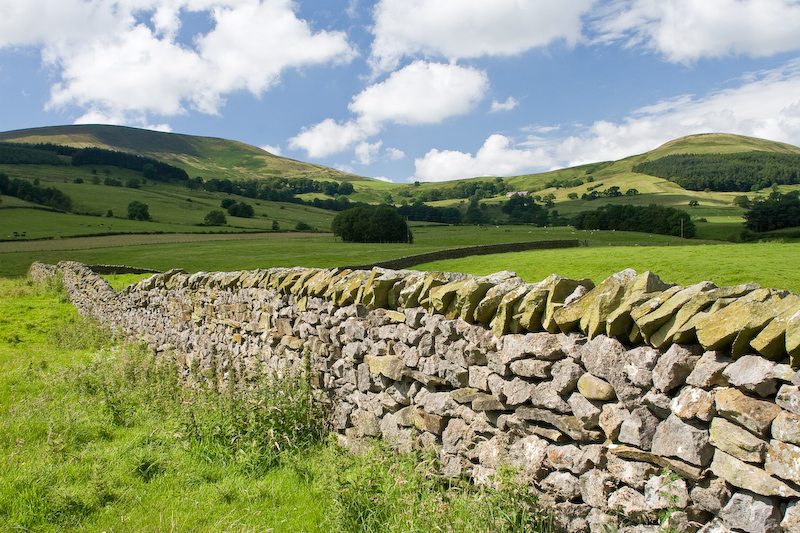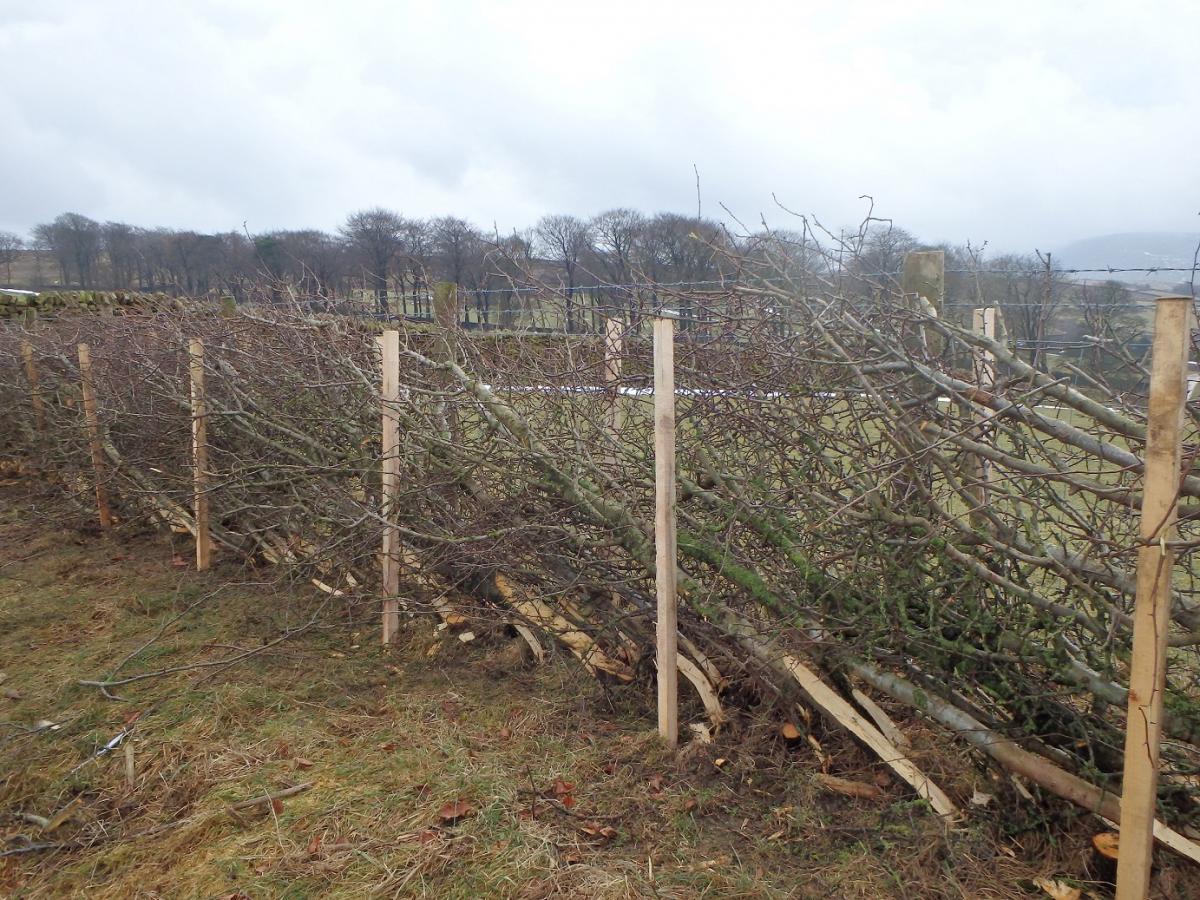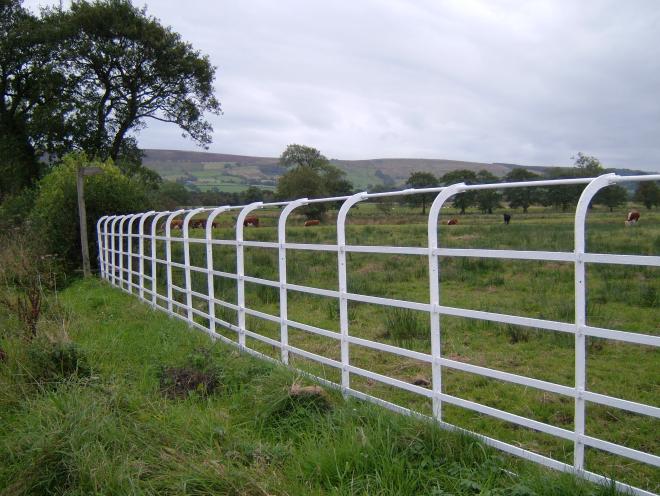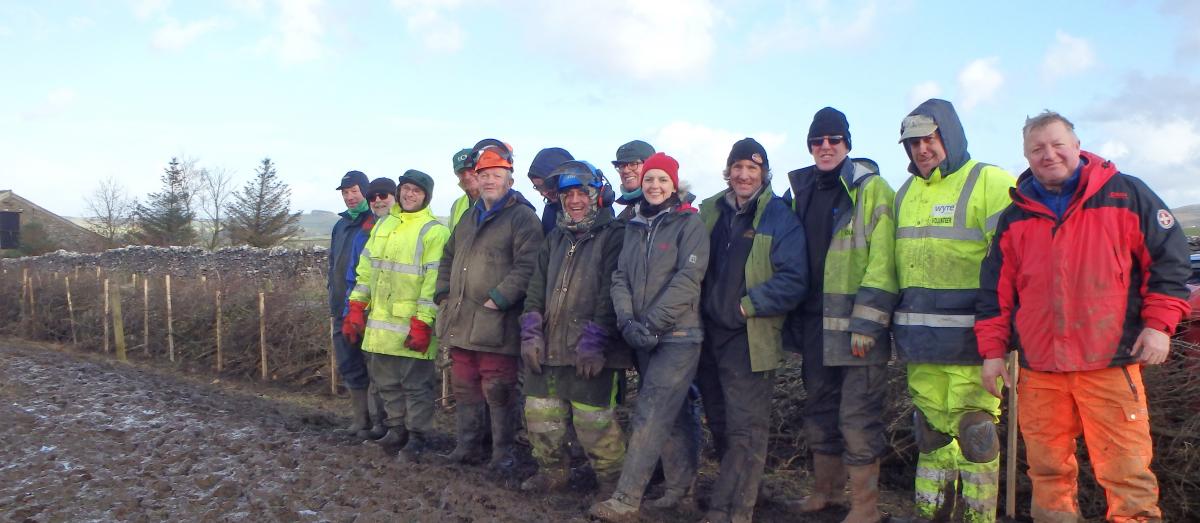Traditional boundaries in Bowland include dry stone walls, hedges and metal railings.

In Bowland, dry stone walls are one of the most immediate and visual parts of the landscape. They vary in style from one part of the National Landscape to another depending on the underlying geology of the area and not least the individual preferences of the landowner and then the personal style of the waller.
"Dry stone walling in Britain stretches back at least three and a half millennia, to the village of Skara Brae in the Orkneys, and the Iron Age brochs of northern and western Scotland. Use of the craft is found in Britain and elsewhere where large quantities of rock and stone outcrop, and especially where trees and hedges do not grow easily, from height or climate. This is why dry stone walls are most prominent in northern and western Britain, and often at higher altitudes. (Extract from the Dry Stone Walling Association's "A Brief History of the Craft in Britain".)
 Hedges in Bowland tend to be found on lower, more fertile land. A hedge laid in the Lancashire and Westmorland style has the stems laid at approximately 45 degrees, is square cut and at least 3' 6" high, with stakes every 18" or so, on alternate sides of the hedge.
Hedges in Bowland tend to be found on lower, more fertile land. A hedge laid in the Lancashire and Westmorland style has the stems laid at approximately 45 degrees, is square cut and at least 3' 6" high, with stakes every 18" or so, on alternate sides of the hedge.
"Hedgelaying is a country craft which has been practised for hundreds of years. The correct management of our hedgerows is essential if we are to conserve our wildlife and landscape for future generations. Hedgerows define our countryside and provide many environmental services, but are also vitally important for wildlife as a refuge, a source of food, and as corridors along which they can move through the landscape." (Extract from the National Hedge Laying Society website.)
 Iron railingswere erected by Lancashire County Council from the 1930s to the 1970s to assist with vision and safety on bad bends on narrow rural roads. They are part of our traditional boundaries and where they have been repainted in white (sometimes green), they make a great contribtion to the landscape. Local people and volunteers have been active in repainting railings in several villages in Bowland.
Iron railingswere erected by Lancashire County Council from the 1930s to the 1970s to assist with vision and safety on bad bends on narrow rural roads. They are part of our traditional boundaries and where they have been repainted in white (sometimes green), they make a great contribtion to the landscape. Local people and volunteers have been active in repainting railings in several villages in Bowland.
The Forest of Bowland National Landscape Partnership promotes and supports reinstatement and repair of traditional boundaries through our long standing Traditional Boundaries programme. We work with partners to promote training in hedge laying and walling and organise courses and competitions. These help to encourage participation, build skills and showcase some of the considerable expertise displayed by craftspeople in and around Bowland.
 If you would like to get involved, take a look at our Volunteering and Training page for the latest opportunities.
If you would like to get involved, take a look at our Volunteering and Training page for the latest opportunities.
You can see some of our previous Traditional Boundaries projects here.
Tale a look at this link to find out about the history of boundaries in Bowland.
